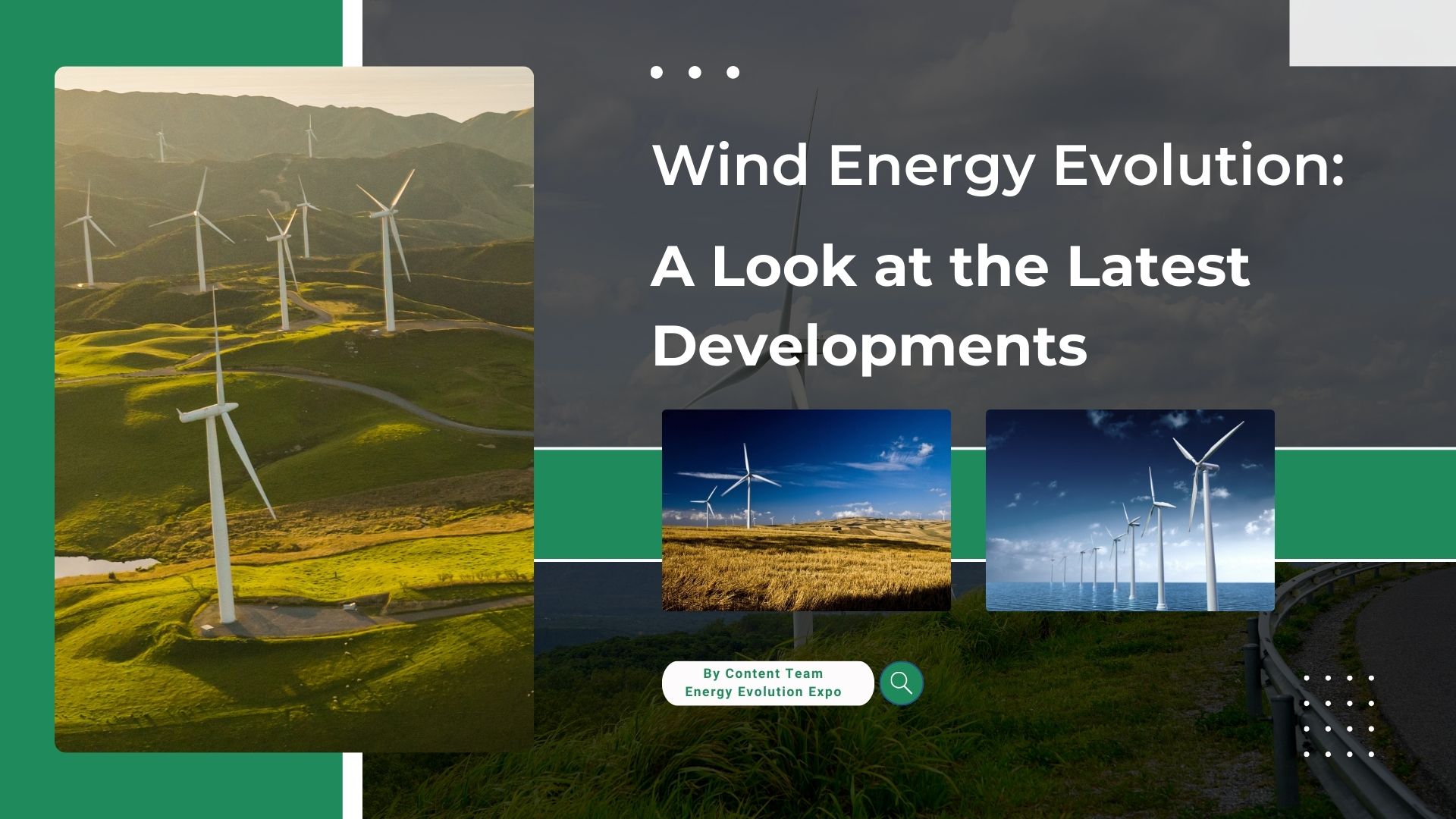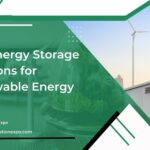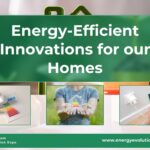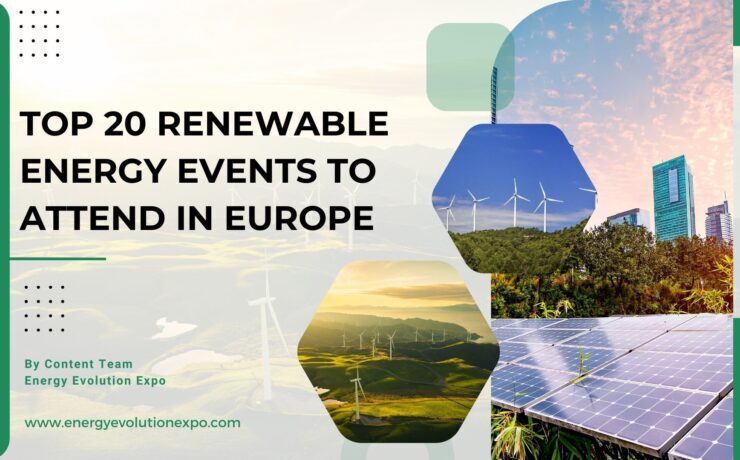Wind Energy Evolution: A Look at the Latest Developments

Our economy’s relentless demand for energy and the negative impacts of fossil fuels make the transition to sustainable alternatives crucial. Wind power stands out as a clean, renewable solution, and recent innovations in this field are promising. These advancements, including airborne wind turbines that access stronger winds at higher altitudes and offshore installations in deep waters, demonstrate the immense potential of wind energy. These cutting-edge technologies are poised to significantly enhance our ability to generate and utilize wind power, propelling us toward a more sustainable energy future. Let’s explore some of the innovations in the wind power sector.
Wind energy is a renewable resource harnessed through wind turbines to generate electricity. This eco-friendly technology utilizes the natural power of wind to produce clean energy. Wind energy innovations continue to evolve, with advancements like airborne wind turbines, bladeless wind turbines, and vertical axis turbines revolutionizing the industry. Harnessing wind energy offers sustainable solutions for powering homes, businesses, and communities worldwide.
For More Information, Click here
Table of Contents
AIRBORNE WIND TURBINES
Airborne Wind Turbines (AWTs) are advanced wind energy systems designed to harness wind power at higher altitudes than traditional tower-mounted turbines. These turbines are typically tethered to the ground and can reach altitudes where winds are stronger and more consistent. Here are two notable examples:
Makani Airborne Wind Turbine:
This turbine operates at altitudes around 1,000 feet, accessing winds that are stronger and more reliable than those available to conventional turbines. This technology expands the potential wind resource area to 85% of the US, compared to 15% with traditional turbines, and can be used in deep offshore waters, significantly increasing the renewable energy capacity.
Altaeros Airborne Wind Turbine:
Featuring a helium-filled, inflatable shell, the Altaeros turbine rises to high altitudes, capturing more consistent and powerful winds. The energy is transmitted to the ground via tethers. This design not only increases energy efficiency but also reduces installation costs and time, potentially cutting energy expenses by up to 65% and installation time from weeks to days.

Wind Energy Evolution
BLADELESS WIND TURBINES
Bladeless wind power is an innovative technology that generates electricity without the use of traditional rotating blades. Instead, it employs alternative mechanisms to capture the kinetic energy of the wind. This technology offers several advantages, including reduced noise, lower impact on wildlife, decreased maintenance costs due to fewer moving parts, and simpler installation processes, making it suitable for diverse environments, including urban areas.
For instance, the Vortex Bladeless Wind Turbine and Windstalk.
The Vortex Bladeless Wind Turbine is an innovative wind energy technology that generates electricity without traditional spinning blades. Instead, it uses a vertical cylinder that oscillates in response to the wind. This oscillation is then converted into electrical energy through an alternator system. The design offers several benefits, including lower noise levels, reduced maintenance costs due to fewer moving parts, and a minimized impact on wildlife, making it an environmentally friendly alternative to conventional wind turbines.
Windstalk utilizes hollow poles containing stacks of piezoelectric ceramic discs. Electrodes are situated between the ceramic disks, with alternating electrodes connected to each other via cables running from the top to the bottom of each pole. As the wind moves the poles, the piezoelectric disks experience compression, producing an electric current through the electrodes.
VERTICAL AXIS TURBINES
Vertical axis wind turbines (VAWTs) are a type of wind turbine characterized by their main rotor shaft being positioned perpendicular to the ground, unlike horizontal axis wind turbines (HAWTs) where the main rotor shaft runs parallel to the ground. VAWTs typically feature blades that rotate around a vertical axis, enabling them to capture wind from all directions. These turbines are often designed to be more compact and adaptable to urban or restricted spaces.
VAWTs come in various designs, such as Savonius, Darrieus, and helical, each with its unique advantages and drawbacks. While commonly used in smaller-scale applications, efforts are underway to develop larger VAWTs for commercial purpoSES. Some notable examples include
Savonius Turbines:
These turbines have a simple design consisting of curved blades that rotate around a vertical axis. They are known for their reliability and ability to start rotating at low wind speeds, making them suitable for small-scale applications such as residential use or powering off-grid systems.
Darrieus Turbines:
Darrieus turbines have a more complex design, featuring curved blades arranged in a helical or eggbeater shape around a vertical axis. They are efficient at higher wind speeds and can generate significant amounts of electricity. However, they often require external mechanisms to start rotating and are less common in commercial applications compared to horizontal axis turbines.
Eddy Turbines:
It refers to a type of vertical axis wind turbine (VAWT) turbine that utilizes the concept of eddy currents, which are swirling currents induced in conductors when exposed to a changing magnetic field, to generate electricity. Eddy current turbines typically consist of a series of rotating magnets surrounded by conductive coils. As the magnets rotate, they create a changing magnetic field, inducing eddy currents in the surrounding coils, which in turn generate electricity through electromagnetic induction.
These turbines have been proposed as a potential alternative to traditional wind turbines, offering advantages such as simpler design, reduced noise, and potentially higher efficiency at lower wind speeds. However, they are still in the experimental stage and have not yet been widely deployed for commercial energy generation. Research and development in this area continue to explore the feasibility and potential applications of eddy current turbines in the renewable energy sector.
Wind Spire Turbines:
Typically refers to vertical axis wind turbines (VAWTs) that feature a spiral or helical design resembling a spire.The standard Windspire is 30-feet tall and 4-feet wide, designed to come in under the typical 35-foot height restrictions of local municipalities. Due to the vertical axis design, sound levels were tested at 6 decibels above ambient, rendering it virtually inaudible and the 1.2kW Windspire installed at the farm will produce approximately 2000 kilowatt hours per year in 11 mph average wind.
Wind spire turbines are designed to capture wind from all directions, making them suitable for urban environments or locations with turbulent wind conditions. They are often used in small-scale applications, such as residential settings or to power off-grid systems.
The spiral or helical design of wind spire turbines allows for efficient energy capture, even in low wind speeds, and they can produce electricity with minimal noise and vibration. Additionally, their sleek and modern appearance makes them aesthetically pleasing and suitable for integration into architectural designs.While wind spire turbines offer several advantages, including versatility and compact size, they may have lower energy output compared to larger horizontal axis turbines. However, ongoing advancements in design and technology aim to improve the efficiency and performance of wind spire turbines for wider deployment in the renewable energy sector.
QUIET WIND TURBINES
Quiet wind turbines are designed to operate with minimal noise, making them suitable for residential areas and locations sensitive to noise pollution. These turbines incorporate various features such as specialized blade designs, enhanced tower structures, variable speed technology, and noise-absorbing materials to reduce sound levels during operation.
For instance,Eco Whisper Turbine offered by Australia Renewable Energy Solutions is known for its virtually silent operation despite its smaller size and 20 kW generating capacity. Additionally, turbines with innovative components like advanced bearings and sound-dampening systems further contribute to quieter operation. Overall, quiet wind turbines offer a viable solution for harnessing wind power while minimizing noise disturbance in surrounding environments.
Another example of a quiet wind turbine is the Quiet Revolution QR5 turbine. This turbine features a unique helical blade design that reduces aerodynamic noise and vibration. It operates at low rotational speeds, resulting in quieter operation compared to traditional horizontal axis turbines. The QR5 is famous for being one of the easiest and most convenient wind turbines to transport and install—definitely ideal for the most remote and narrow places.
The QR5 turbine is designed for urban environments and has been installed in various locations worldwide, including city centers and residential areas, where noise pollution is a concern.
WIND TURBINE LENSES
The concept is inspired by the Venturi effect, where the narrowing of a fluid flow path results in an increase in velocity and a decrease in pressure.
The Wind Lens is a specific wind energy innovation developed in Japan. It is a novel wind turbine design that incorporates a shroud or “lens” around the turbine blades to accelerate wind speed and increase power generation efficiency. In the case of the Wind Lens, the shroud or lens surrounding the turbine blades accelerates the wind passing through it, effectively concentrating and directing the airflow onto the turbine blades. This design aims to enhance the energy capture capability of the turbine, particularly in low wind speed conditions, by increasing the velocity of the wind passing through the turbine rotor.
The Wind Lens technology has been developed and tested by researchers and engineers in Japan, with the goal of improving the performance and cost-effectiveness of wind turbines, especially in areas with limited wind resources. While still in the experimental stage, the Wind Lens represents an innovative approach to wind energy generation and has the potential to contribute to the expansion of renewable energy sources in the future.
MANMADE ATOLL
The Manmade Atoll in the North Sea refers to an artificial island project, proposed by Belgium, aimed at creating a hub for renewable energy generation, storage, and distribution in the North Sea region. This innovative concept involves constructing a large, artificial island in the shallow waters of the North Sea, which would serve as a central location for offshore wind farms, energy storage facilities, and other infrastructure related to renewable energy production.
The idea is to place the island a few kilometers off shore near a wind farm. When the wind farm produces excess energy for the local electricity grid, such as off-peak times in the overnight hours, the island will store the energy and release it later during peak times. It would use the oldest and most cost-effective bulk energy storage, which is pumped hydro. During off-peak times, power from the turbines would pump water up 15 meters to a reservoir. To generate electricity during peak times, the water is released to turn a generator, according to a representative.
The world’s first artificial energy island has secured its environmental permit, so it’s now all systems go in Belgium. Princess Elisabeth Island is a pioneering electricity grid at sea that’s going to connect offshore wind farms to the Belgian mainland and also serve as a hub for future interconnectors with the UK and Denmark.Belgian electricity transmission system operator Elia is the project’s developer, and obtaining the permit, which Elia applied for in January 2023, is a key milestone. Construction will take over two years, from March 2024 to August 2026.
Princess Elisabeth Island is part of the larger Princess Elisabeth Zone, a future 3.5 gigawatt (GW) offshore wind farm in the North Sea, around 45 km (28 miles) off the Belgian coast. The world’s first artificial energy island will receive power from the wind turbines via undersea cables, and it will then be converted to high-voltage electricity and distributed to the Belgian mainland and other European countries. The energy island will combine both direct current (HVDC) and alternating current (HVAC).
MULTIPURPOSE OFFSHORE WIND TURBINES
Multipurpose offshore wind turbines are leading the way in renewable energy innovation by offering more than just electricity generation. These turbines are designed to maximize offshore wind resources while providing additional benefits like water desalination, hydrogen production, marine habitat enhancement, and support for offshore activities. For example, they generate electricity like traditional offshore turbines but also integrate desalination technology to convert seawater into freshwater, which is especially valuable in coastal areas with limited freshwater resources.
Additionally, some turbines incorporate electrolysis systems to produce hydrogen, a clean fuel for various applications. Innovative turbine designs also include features that provide habitat for marine life and serve as stable platforms for offshore activities like aquaculture and research. By integrating these functions, multipurpose offshore wind turbines offer the potential to enhance economic, environmental, and social benefits while addressing various challenges. While real-life examples of this concept are still emerging, projects like Seaweed Energy Solutions and Ocean Forests demonstrate the promising synergy between offshore wind energy and complementary activities like seaweed farming, paving the way for sustainable offshore developments.
In the realm of wind energy innovation, progress is ever-evolving. While certain advancements remain conceptual, others are already undergoing prototype or testing stages, poised to make significant contributions to the energy market soon. These developments, spanning offshore wind, residential turbines, and community-owned projects, herald a bright future for renewable energy.
To facilitate understanding of the latest developments and trends in the Renewable energy Industry, various Conferences and Expos, which bring Industry leaders together, are crucial. The Energy Evolution Awards, Conference, and Expo organized by Next Business Media is making its debut in Spain in 2025. It will be a leading forum dedicated to honoring excellence in Energy Technology, showcasing innovations, and fostering collaborations.
The events unite industry leaders, and visionaries to explore the latest advancements, tackle key challenges, and shape the future of Energy. The Energy Evolution Awards, Conference, and Expo will celebrate outstanding achievements, promote sustainable practices, and drive the Energy Industry forward into a technologically advanced sustainable era. Energy Evolution Awards, Conference, and Expo will be a platform for cultivating innovation and shaping a brighter, more efficient energy landscape.






